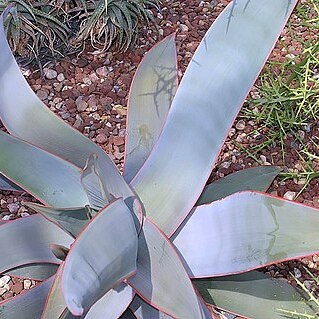A herb. It has a woody rootstock. The stems are soft and leafy. These are 50 cm high. The leaves on the stem do not have stalks. The leaves are erect and narrow. They are 4 cm long by 3 mm wide and are pointed. The flowers are at the top of the branches. There are 3 or 4 slender flowering shoots in a loose cluster. The leaves near the flowers are broad and almost kidney shaped. The fruit is 3 angled and slightly rough. It is 3 mm across.
Bisexual, erect, glabrous herb, 0.2-0.6 m high, with annual stems from perennial rootstock. Leaves widely spaced, 12-50 x 1-6 mm, ascending, linear-lanceolate, tapering to slender tip, flat or with incurved margins. Cyathia in lax rayed panicle, 3-5 mm in diam.; glands 4, crescent-shaped. Flowering time Sept.-Mar. Capsule 3.5-4.5 mm in diam., obtusely 3-angled, exserted for 1-3 mm.
Monoecious shrublet to 50 cm, with wiry stems from woody base. Leaves ascending, linear-lanceolate, sessile, acuminate, 15-40 cm long. Flower clusters in lax panicles, floral glands crescent-shaped.

